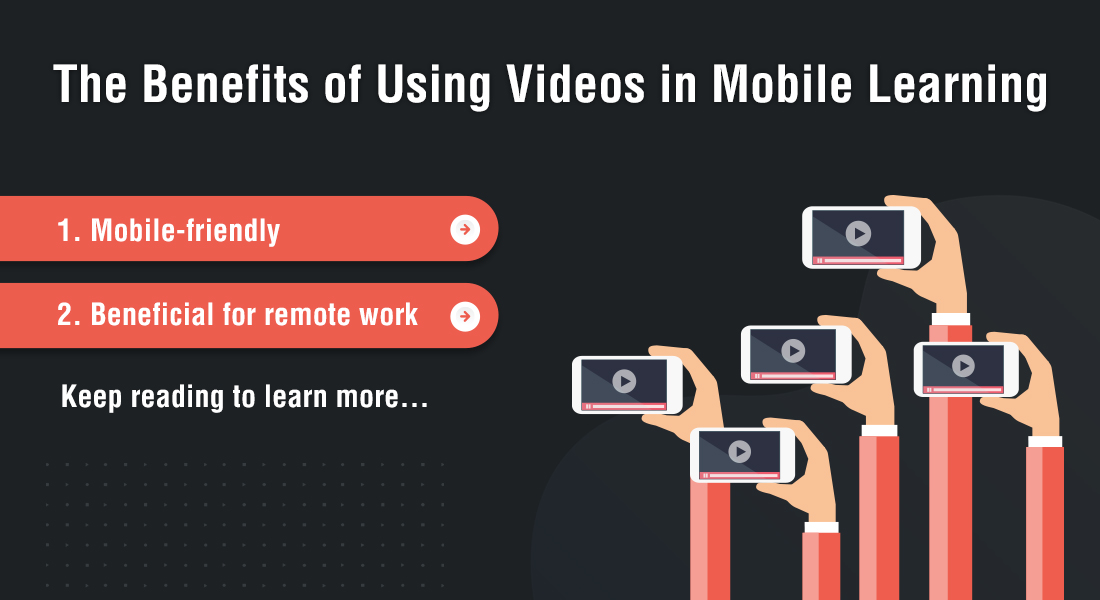The Perfect Duo: 4 Reasons Videos and Microlearning Go Together

Microlearning has become the new favorite in the e-learning world, thanks to the growing number of employees who belong to the millennial generation. To this generation, whose typical characteristics are short attention spans, busy lifestyles, and a tendency to access information on their mobile phones, microlearning is a perfect fit. Small, bite-sized modules which millennial learners can access anytime and anywhere is just what they need. However, how can you design microlearning so that it hits the target each time, every time?
→ Download Now: Microlearning — Where Does It Fit in Your Learning Strategy?
For this, the medium you use to deliver your microlearning is important. Remember, the essence of microlearning is to deliver targeted learning that is easily understood and absorbed, and videos can be an effective medium to serve this purpose.
Videos are no doubt a hot e-learning trend. Here are four reasons videos are an ideal choice to drive microlearning.
Reason #1. Videos are popular and effective
75% of millennials visit YouTube monthly and it is not only them, people across different age groups prefer videos to other mediums. Studies suggest that videos are the most popular form of content.
Videos work well when there is a need to communicate information in a short time. With a dedicated YouTube channel, you can create videos on any subject, from removing a laptop cover to teaching an important sales technique.
Reason#2. Appeal to both visual and auditory learners
Most of us are visual learners, and visuals combined with audio (videos) can promote a higher rate of knowledge transfer. Videos can greatly benefit e-learning, especially microlearning. Videos benefit both visual and aural learners, and can meet the needs of multiple audiences with closed captioning, descriptive audio, graphics, and animations.
Short videos can be used to demonstrate knowledge in a show-and-tell method that can promote better comprehension in employees.
Reason#3. Help employees learn at their own pace
Employees can skip videos that contain knowledge they already have, while others can watch the videos more than once to understand better. So employees can learn at their own pace and more importantly, at their convenience.
Reason#4. Cheap and easy to produce
Videos do not require special skills or expertise to produce. Microlearning videos do not require a lengthy documentation or the development of several slides or animations; instead an instructional designer or subject matter expert (SME) can simply record a short clip by narrating a process or program. They can also be quickly updated and distributed, which will ensure that learners get current information. They can be used for future reference as well.
Here are a few tips to help you use videos effectively for your microlearning needs:
Address only one objective in each video because your audience needs just-in-time information and are pressed for time when they access videos. They need precise information, in a concise way. So put the objective at the top, starting from the title, this will help you exclude irrelevant details. However, you can create separate videos on related topics which you can refer to, in the video you are creating.
In videos, it is important to have compelling visuals which clearly explain the topic you are trying to teach. Visuals simplify ideas and can also grab learners’ attention, especially if there are distractions that can pull them out of the e-learning experience. Visuals have to be intriguing; trends and stats can be represented through graphs and pie charts. Key steps in a process can be shown through diagrams and flowcharts.
It is important to follow a script so that the video does not go astray from the topic. A better idea is to create a storyboard that has details of every scene, the visual and audio elements. This will ensure that you will include only the main takeaways in your video and that too in an easily understandable way.
Remember microlearning videos need to focus on what truly matters, so the rule is to avoid extraneous content, including visuals and audio, that does not serve any purpose.
Videos can be the ideal vehicle for your microlearning initiative, provided you know how to design them so that they meet the learning objectives, while appealing to learners.





